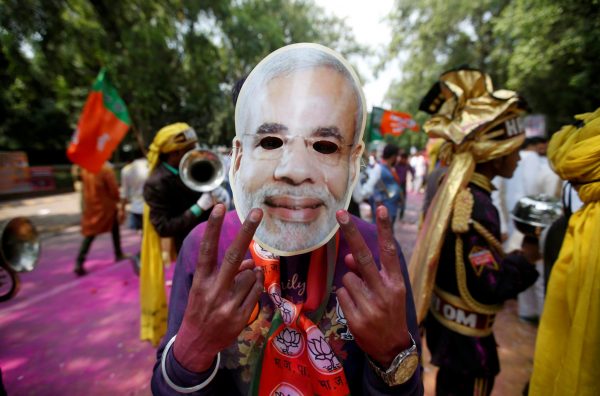So it is no surprise that the comprehensive defeat of the Aam Aadmii Party (AAP) in the municipal elections held in New Delhi on 23 April has led to much soul-searching and recrimination.
In the last general elections for the New Delhi territorial government held in 2015, the AAP, led by anti-corruption activist Arvind Kejriwal, won 67 seats; its major rival, the Bharatiya Janata Party (BJP), won just three. The Indian National Congress Party, which had formed the outgoing government in the territory, failed to secure a single member in the new legislative assembly. That stunning victory for the AAP seemed to signal a change in India’s electoral firmament and inspired the party to think of expanding its base elsewhere in the country.
But things have not always gone smoothly for the AAP since then. The Union Territory of New Delhi has a special and somewhat subsidiary status in India’s federal structure. In place of a governor, the usual ceremonial representative of the central government, New Delhi has a lieutenant governor. In violation of parliamentary traditions — but presumably on instructions from the Modi government at the centre — Delhi’s lieutenant governor has been actively intervening in the daily administration of the territory. This has in turn hindered the ability of Kejriwal’s AAP government to implement its policies. And attempts to establish a beachhead in other states have been unsuccessful.
April’s elections were for the three municipal governments that administer different sections of New Delhi’s sprawling territory of 28 million people. Those local governments have been dominated in recent years by the BJP. But the AAP had hopes that its clean-sweep at the territorial level would be replicated locally. The AAP also expected that voter anger at the decision by the Modi government to demonetise large denomination rupee notes — which caused widespread hardship for several months — would play in their favour. Those hopes were dashed. The BJP won 181 wards in the three municipalities, while the AAP won only 48 and the Congress Party came a poor third, winning in only 30 wards.
The re-election of so many BJP council members seems to demonstrate that the BJP has managed to overcome the strong ‘anti-incumbent’ propensity of the Indian electorate. A number of observers see the electoral success in New Delhi as linked to the chain of BJP successes in recent state elections — a similarly crushing victory was recorded in the hugely populous state of Uttar Pradesh in March.
The BJP victory there and in other states has been attributed to several factors. The BJP is the political arm of the National Volunteers Association — Rashtriya Swayamsevak Sangh (RSS) — a conservative, Hindu-nationalist paramilitary organisation whose disciplined members are a key resource on the ground for the party at election time. The BJP also managed to secure the defection of some key politicians from rival parties as well as capitalise on anti-Muslim sentiment. Above all, the party drew on the charisma of its unchallenged national leader, Prime Minister Narendra Modi. It is clear that Modi and his shrewd political lieutenant Amit Shah hope to extend the sway of the BJP into other states and effect the political demise of the venerable Congress Party.
But there is a significant caveat to this that must be addressed. The sweeping successes of the BJP since 2014 largely reflect the multiplier effect of India’s ‘first past the post’ electoral system, rather than overwhelming support among the electorate. In the Modi ‘wave’ that brought the party to power at the national level in 2014, the BJP secured just 31 per cent of the national vote but won 282 seats in the 543 member Lok Sabha, the lower house of the Indian parliament. In this year’s elections in Uttar Pradesh, the BJP won 312 of the 403 seats, but their share of votes cast was just under 40 per cent. And in the most recent New Delhi municipal elections the BJP won a striking victory but received only 39 per cent of the votes.
The tendency of ‘first past the post’ electoral systems to produce competition between two major contenders is so well established that it is taken as ‘law’ in political science literature. If India is to avoid becoming a one-party state, the numerous parties opposing the BJP will have to swallow their differences and form electoral coalitions. If they don’t, the Modi steamroller will flatten them all.
Peter Mayer is Associate Professor and Visiting Research Fellow at the University of Adelaide.

